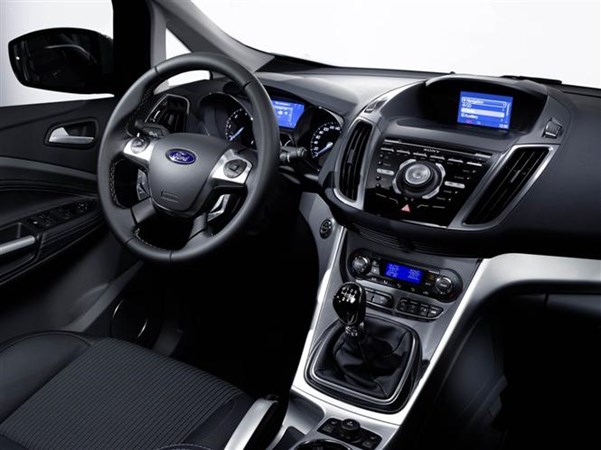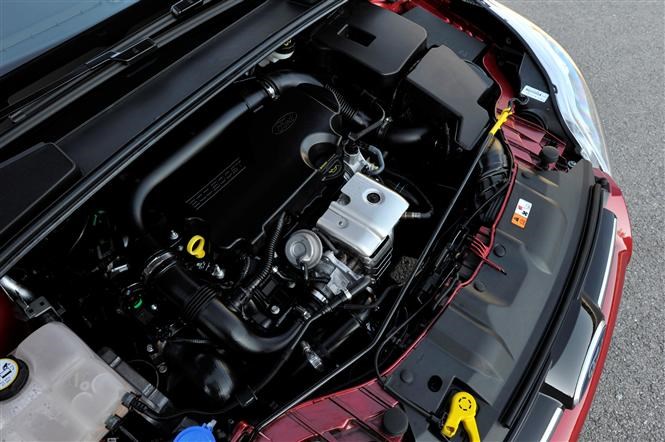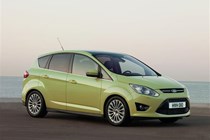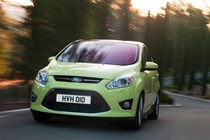In days of yore company car lists consisted of executive saloons, the odd hatchback and a bunch of estates, normally with a pair of engine choices and your pick of GL or GLX trim. Exciting it wasn’t.
But as times change, so too have peoples lives – and their demands. Now the week’s company car has become an important part of the weekend’s family wheels, and the chooser lists are much more diverse because of it.
Which is why the Ford C-Max, a traditional compact family people carrier, has become such a popular choice. Comfortable and efficient enough to handle the most arduous of commutes, but versatile, practical and stylish enough to suit whatever the most chaotic family weekend can throw at it.

It is essentially a square, round and triangular peg fit for whatever square, round or triangular hole that’s thrown at it.
Strictly a five-seater (you’ll need a seven-seat Grand C-Max if you’ve got more than four passengers to ferry around at the weekend) the C-Max is still more practical, and spacious, than a regular Ford Focus.
In the front there’s acres of room for driver and passenger, with the gearlever neatly located high up on the centre console and a large windscreen flooding the cabin with light. Behind is a regular three-seat bench, but the seats can be split in a 40/20/40 configuration for those tasks that require a jigsaw of people and their personal belonging carrying.

Add the Comfort System and the centre portion can be folded away completely, allowing you to slide the remaining pair back for greater legroom (and shoulder space) with a 2+2 seating configuration. Drop all of the rear seats neatly into the floor and the boot space available climbs from 432-litres to 1,723-litres.
There’s no need to look for extra engine choice though; in total Ford C-Max buyers have the option of 10 different engine and gearbox configurations, a mixture of diesel and petrol or automatic and manual ‘boxes.
We’ll ignore the underpowered 1.0-litre EcoBoost petrol with 100bhp (since its 125bhp brother is equally efficient) along with the 1.6-litre Ti-VCT which falls by the wayside by virtue of its mere 105bhp but lofty 149g/km CO2 emissions. The 1.6-litre EcoBoost by comparison musters 147’ or 182bhp with emission ratings of only 144g/km (regardless of power output) and fuel economy of 45mpg.
Only the 1.6-litre diesel can match the 1.0-litre Ecoboost’s 117g/km CO2 emissions, but if you must have a diesel (and can afford the extra BIK from its higher CO2 output) it’s the 2.0-litre TDCi with 163bhp that is the most appealing – the 57mpg average economy and 129g/km CO2 figure seemingly entirely worth the sub nine second 0-62mph time.

There’s no doubt the star of the company car engine line up is the higher-powered 123bhp 1.0-litre EcoBoost petrol engine, which manages to emit less than 120g/km and return over 55mpg, though in the real world you can expect that to be around 10-20 percent lower. Take into account the lower cost of petrol versus diesel at the pumps though and it’s still impressive.
Which only leaves a trim level to choose from. That engine is available in all three (Zetec, Titanium and Titanium X) but it’s mid-spec Titanium that makes sense thanks to the standard heated windscreen, Bluetooth, DAB radio, auto headlamps, dual climate control, keyless start, cruise control and 17-inch alloy wheels.
Do so and you’ll pay a P11D price of £20,095 and BIK for 2014/15 of 16 percent (£643 for 20 percent tax payers), but you’ll also benefit from one of the most fun to drive, well-equipped, efficient and versatile family MPVs in the business.
Our company car choice: Ford C-Max 1.0 EcoBoost (123bhp) Titanium
2014/15 monthly tax costs for 20 percent payer: £53.59
2014/15 monthly tax costs for 40 percent payer: £107.18
Just so you know, we may receive a commission or other compensation from the links on this website - read why you should trust us.






